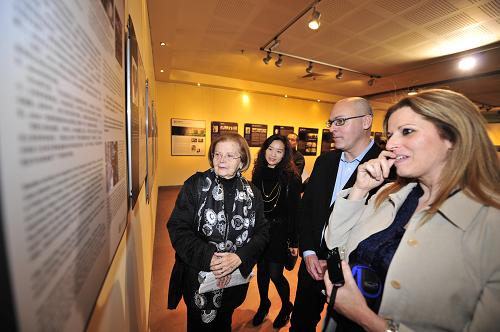Explores life of Jewish refugees in Shanghai
Updated: 2012-02-28 14:28
(Xinhua)
|
|||||||||

"Jewish refugees and Shanghai," a new exhibition inaugurated in Haifa on Thursday, dives into the history of Jewish refugees in China during the World War II.
The exhibition, as part of the celebrations of the 20th anniversary of China-Israel diplomatic relations, shows how Jewish people fled the massacre in Europe and were accepted into China, as well as their daily life in Shanghai.
After Jewish refugees entered into China, their communities thrived as they were allowed to practice their religion and participate as part of the work force.
"Some of the Jewish refugees have come back several times to look back into their old time," Chen Jian, curator of Shanghai Jewish Refugees Museum, told Xinhua. "They cherish those memories as some of them have asked their families and friends to visit Shanghai together."
The exhibition was brought to Israel by the Museum which has been operating since 1997, to allow refugees and their families to re-explore that part of history.
"For those wanting to know how their old homes look right at present, we're bringing this exhibition so more people could know and experience how these places look like now," Chen said.
Nina Walterns, an 80-year-old refugee originally from Poland, visited the exhibition to revive the years she spent in Shanghai, after her father relocated all the family to escape Nazi persecution.
"When we moved to Shanghai in the beginning of 1941, it was wonderful and the Chinese were exceptionally kind to us, helping us in every way although we didn't speak the language."
But Nina also recalled that the Japanese, who invaded Shanghai in 1943, decided to move them to another neighborhood, a Jewish ghetto in Hongkou.
"The Japanese had learned something from the Germans, and when they entered Shanghai and saw that we had Polish passports, they forced us to move to Hongkou since we were stateless refugees."
Nina, who had lived in Shanghai for seven years and later moved with her family to the United States, went back to Shanghai in 1992, but would love to visit more.
"Although there is no one left from our neighborhood, I want to take my family there again, because of all the memories I have from that time," she said.